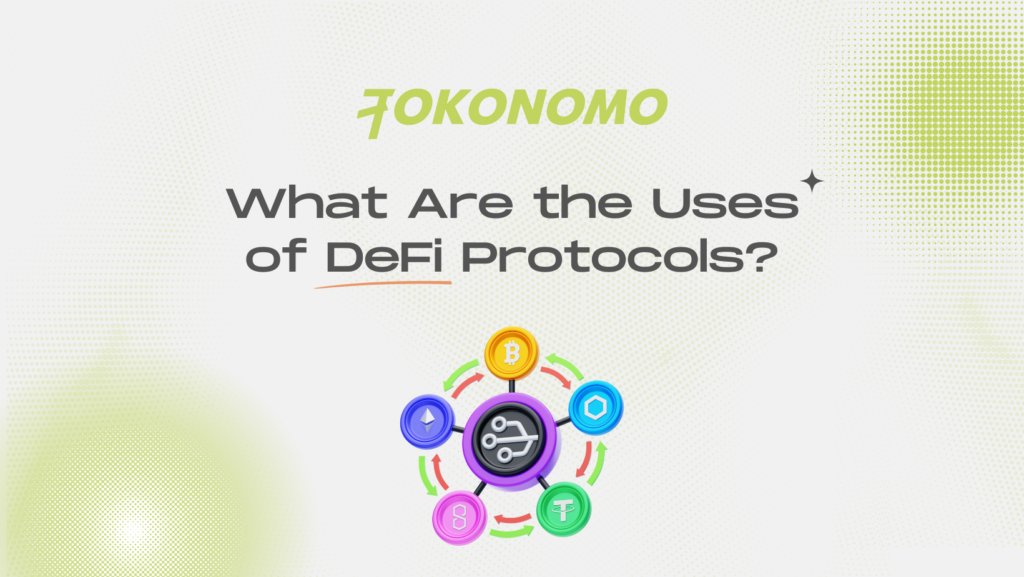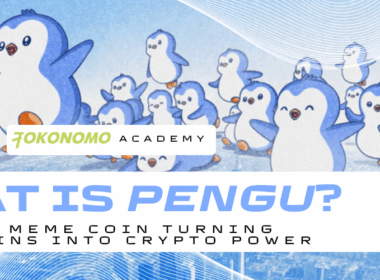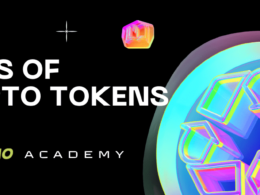Table of Contents
- What Are the Uses of DeFi Protocols?
- Grasping the Basics of DeFi
- Why Is Conducting Due Diligence in DeFi Important?
- Key Metrics for Assessing a DeFi Protocol’s Performance
- Assessing the Team Behind the DeFi Project
- Evaluating DeFi Technology
- Examining the Tokenomics of DeFi Projects
- Assessing Security Protocols
- Examining DeFi Communities and Their Adoption
- Conclusion
What Are the Uses of DeFi Protocols?
The rapid and explosive growth of decentralized finance (DeFi) has dramatically transformed the financial landscape, introducing a wide array of cutting-edge products and services. This evolution has provided individuals with unprecedented and unparalleled access to financial services and products without the need for traditional intermediaries like banks or financial institutions.


DeFi has truly democratized finance, enabling anyone with an Internet connection to participate in activities such as lending, borrowing, trading, and earning interest on their digital assets. However, with an increasing number of projects flooding the market, it’s essential to understand how to evaluate and analyze DeFi projects effectively. This means investors must perform comprehensive due diligence before acquiring a project’s tokens.
Grasping the Basics of DeFi
Before embarking on the analysis process, it’s crucial to thoroughly understand the foundational elements of DeFi projects. DeFi encompasses a wide array of financial applications that are built on blockchain networks to deliver open, permissionless, and trustless alternatives to conventional financial services. These innovative projects typically offer core functionalities such as lending, borrowing, decentralized exchanges, and yield farming.
Due to the inherently open and permissionless nature of this technology, a diverse range of individuals and teams are developing various applications that cater to numerous use cases, including providing users with unprecedented control over their personal data and full ownership of their digital assets. However, newcomers to the DeFi space should approach these projects with a heightened sense of caution and skepticism, as the ecosystem is still evolving and can present significant risks.
Why Is Conducting Due Diligence in DeFi Important?
Thorough due diligence in decentralized finance (DeFi) is crucial due to the distinct characteristics and inherent risks tied to this fast-paced and constantly evolving sector. Investing in DeFi often comes with significant risks, including the potential for rug pulls, hacking incidents, and the complete or partial loss of an investor’s capital. A comprehensive evaluation of the project’s core fundamentals, team composition, technological foundation, and security protocols enables investors to make well-informed decisions and potentially steer clear of scams or poorly executed ventures.
By engaging in diligent research, investors can make sound, informed choices, mitigate exposure to risks, and uncover investment opportunities that align with their specific financial goals and risk appetite. This process lays the groundwork for the essential knowledge and understanding required to navigate the intricacies of the ever-changing DeFi ecosystem.
For those seeking to enter the DeFi space, it is essential to approach new projects with careful consideration, keeping the following critical factors in mind.
Key Metrics for Assessing a DeFi Protocol’s Performance
Several widely recognized metrics can offer valuable insights into the performance and potential of DeFi projects. Key indicators include the token’s 24-hour trading volume, inflation rate, price trends, and overall market capitalization.
Total Value Locked (TVL)
Total Value Locked, commonly referred to as TVL, represents the cumulative amount of funds that are currently locked within a decentralized finance (DeFi) protocol. To conceptualize TVL, you can consider it as the total sum of funds that liquidity providers have deposited into a specific protocol. For instance, as of October 2024, Uniswap boasts a TVL exceeding $5 billion. This figure indicates that users have collectively deposited more than $5 billion into Uniswap. Analyzing TVL can provide insights into the overall interest and engagement with a particular DeFi protocol, and it can also be used for comparative analysis to determine which DeFi protocol is effectively “locking” in more value than its competitors. Generally, the ability to attract and maintain a substantial TVL is often indicative of a protocol’s strength and resilience in the market.


24-hour volume
The 24-hour trading volume is a crucial metric that quantifies the total value of all trades executed within a particular DeFi protocol over a designated 24-hour period. When the 24-hour volume is high, it signifies active trading activity and improved liquidity, which in turn suggests a thriving ecosystem and considerable market interest. Conversely, a low 24-hour volume reflects a lack of buying and selling of the protocol’s tokens, indicating diminished liquidity. This reduced volume can have various implications, such as a potential lack of interest or participation from both traders and investors, which may ultimately impact the overall health and sustainability of the protocol.
Price-to-sales ratio
The price-to-sales ratio serves as a valuable metric to assess whether a decentralized finance (DeFi) protocol is potentially undervalued or overvalued in the market. To compute the price-to-sales ratio, one must take the fully diluted market capitalization of a particular DeFi protocol and divide it by its annual revenue. A lower ratio typically indicates that the protocol may be more undervalued, whereas a higher ratio suggests the opposite. This method parallels the way the price-to-sales ratio is utilized in traditional financial markets to evaluate whether a stock is undervalued or overvalued, providing a useful framework for investors in both domains.
Unique address count
The unique wallet address count serves as a vital metric that quantifies the number of participants actively engaging with a specific DeFi protocol. This measure is analogous to the concept of unique users commonly employed in traditional Web2 applications, where it helps gauge user engagement levels. A rising number of unique wallet addresses may signify a positive trend, indicating an increase in popularity and adoption within the protocol. However, it’s essential to acknowledge that this particular metric is susceptible to manipulation; therefore, investors should consider using it in conjunction with various other indicators for a more comprehensive analysis.
Inflation rate
Another significant metric that deserves careful consideration is the inflation rate. The inflation rate refers to how quickly new tokens are generated within a decentralized finance (DeFi) protocol. Generally, a lower inflation rate benefits the system because it indicates a more regulated and controlled token supply, which may lead to a higher value over time. Nonetheless, it is essential to evaluate the overall tokenomics and distribution model comprehensively to ensure that the protocol successfully strikes a balance between incentivizing active participants and maintaining token scarcity.
Market capitalization
Market capitalization, commonly referred to as market cap, is a metric that measures the overall value of a DeFi protocol by calculating the total worth of its circulating supply of tokens. We derive this figure by multiplying the current price of a single token by the total number of tokens currently in circulation. By providing a numerical value, market capitalization serves as a valuable indicator of the protocol’s size, prominence, and influence within the decentralized finance landscape. However, it is crucial to analyze the market cap in conjunction with other important factors, including the protocol’s utility, levels of adoption among users, and the competitive landscape within the DeFi sector.
Assessing the Team Behind the DeFi Project
Investors should take the time to thoroughly identify decentralized finance (DeFi) projects that align with the use cases they genuinely believe in and carefully evaluate the teams behind these initiatives. This evaluation process can be effectively carried out by examining a variety of resources, including the project’s official website, whitepaper, and information about the leadership team. Additionally, it’s essential to review the past work experience of team members, along with other documentation that highlights their expertise and contributions to the field.
When assessing a project’s team, investors should specifically look for experienced developers, trusted advisors, and industry experts who have a proven track record of successfully executed projects. Furthermore, it is important to evaluate the team’s level of transparency, responsiveness, and active engagement with the community across social media platforms such as X, Reddit, Telegram, and Discord. A team that maintains an active presence in open communication channels and provides regular updates on project development is often indicative of a group that is genuinely committed to the use case they are seeking to address.
Conversely, an investor’s preliminary research might uncover that the team behind a project is unresponsive on social media or that there is a notable lack of transparency regarding the team’s structure and qualifications. While these issues do not automatically signify a scam, they do serve as warning signs, prompting investors to exercise caution before committing to these particular projects.
Evaluating DeFi Technology
The technology that serves as the foundation for any decentralized finance (DeFi) project plays a pivotal role in assessing its overall viability and effectiveness in the market. The specific blockchain platform on which we construct the project is one of the most critical factors to consider.
For example, Ethereum has emerged as a widely favored option due to its robust and well-established infrastructure tailored for DeFi applications. Additionally, several other layer 1 blockchains have surfaced as promising alternatives, offering scalable solutions for DeFi applications as well. Consequently, investors who are considering the acquisition of DeFi tokens should carefully evaluate the advantages and disadvantages associated with the underlying blockchain technology to make a well-informed investment decision.
Moreover, another vital aspect is the thorough evaluation of the smart contracts that drive the DeFi project. Smart contracts are essentially self-executing agreements stored on the blockchain, with the specific terms of the agreement encoded directly within the programming. DeFi projects must conduct regular audits of their smart contracts to minimize potential vulnerabilities and safeguard user funds. While an audit does not guarantee absolute security, a thorough review of a project’s smart contract audit history can provide valuable insights into the team’s commitment to protecting user assets.
Furthermore, interoperability represents another essential characteristic of DeFi tokens, facilitating seamless communication and interaction between diverse platforms and protocols. This feature allows tokens to be easily transferred, traded, and utilized across a wide range of decentralized applications (DApps) and blockchain networks. Therefore, investors should assess the level of interoperability associated with a DeFi token before making an investment decision.
Examining the Tokenomics of DeFi Projects
Tokenomics encompasses the entire economic framework of a cryptocurrency project, including the various incentives it provides to participants within its ecosystem. Investors should begin by thoroughly understanding the fundamental purpose of the token and its specific role within the broader ecosystem, as well as the model used for its distribution.
This examination involves a close analysis of several critical factors, such as the total supply of tokens available and the specific allocation strategies employed to distribute them among various stakeholders. These stakeholders can include team members, community participants, advisors, and other relevant parties. The distribution model is pivotal because it influences the initial token allocation and has significant implications for essential aspects like decentralization, project governance, and the potential for market manipulation.
Additionally, it is vital to consider the mechanisms of token issuance, which may include processes like mining, staking, or other methods by which new tokens are created and released into circulation over time. A comprehensive evaluation of these issuance mechanisms can provide investors with valuable insights into whether the token is designed to be inflationary or deflationary, its overall scarcity, and the incentives it offers to participants in the ecosystem.
Furthermore, assessing the project’s revenue streams is equally important. Gaining a clear understanding of how the project generates income and sustains its operational activities can yield significant insights into the potential long-term value and sustainability of the token. This revenue may stem from various sources, including transaction fees, platform usage, or other monetization strategies that contribute to the project’s financial health.
Assessing Security Protocols
In light of the increasing prevalence of security breaches within the decentralized finance (DeFi) sector, it has become imperative to thoroughly evaluate a project’s security measures. One key aspect to consider is whether the project undergoes regular audits performed by reputable third-party firms. Such audits typically show that the project actively identifies potential vulnerabilities, enhancing the security of its smart contracts.
Another significant indicator of a project’s commitment to security is the implementation of bug bounty programs. In these programs, the organization establishes specific criteria, comprehensive guidelines, and enticing rewards for individuals who successfully identify and responsibly disclose legitimate security vulnerabilities. These initiatives usually define a specific scope, which delineates the systems, platforms, or software that are eligible for bug hunting.


When a bug hunter successfully discovers a vulnerability, they typically submit a detailed report to the organization. This report outlines the nature of the issue, its potential impact, and the steps necessary to reproduce it. The organization then conducts a verification process to assess the validity of the reported vulnerability. If the findings prove legitimate, the bug hunter receives a bounty or a predetermined monetary incentive.
The willingness of a project to engage in such processes to identify vulnerabilities may serve as a strong indicator of its commitment to staying informed about potential weaknesses and proactively implementing measures to mitigate them effectively.
Examining DeFi Communities and Their Adoption
The strength and vibrancy of a project’s community, along with its adoption rate by users, serve as crucial indicators of its potential for success. These factors offer invaluable insights into the project’s overall viability, prospects for future growth, and acceptance within the broader market.
Engaging with the community surrounding the project is vital for gaining a comprehensive understanding of their sentiments, levels of active participation, and overall enthusiasm. This interaction enables a thorough assessment of the community’s support, engagement, and trust in the project.
Social media platforms such as X, Reddit, Telegram, and Discord are rich sources of information about the project’s community dynamics. Investors should diligently monitor discussions, comments, and the overall level of activity on these platforms, seeking signs of positive sentiment, lively discussions, and an increasing number of followers. A prevailing positive sentiment often indicates a robust sense of trust and enthusiasm for the project among community members.
Conclusion
Evaluating a DeFi project is an essential undertaking that enables investors to make well-informed decisions in the swiftly growing decentralized finance landscape. By taking into account various elements, including the expertise and credibility of the project team, the underlying technology, tokenomics, security measures, and community involvement, investors can develop a thorough understanding of the project’s potential for success.
Nonetheless, it remains crucial to adhere to the principle of never investing more than one can afford to lose. While the factors mentioned above play a significant role in guiding investment choices, this list is not exhaustive. Investors should exercise caution and maintain a healthy skepticism when navigating the complexities of DeFi projects.











